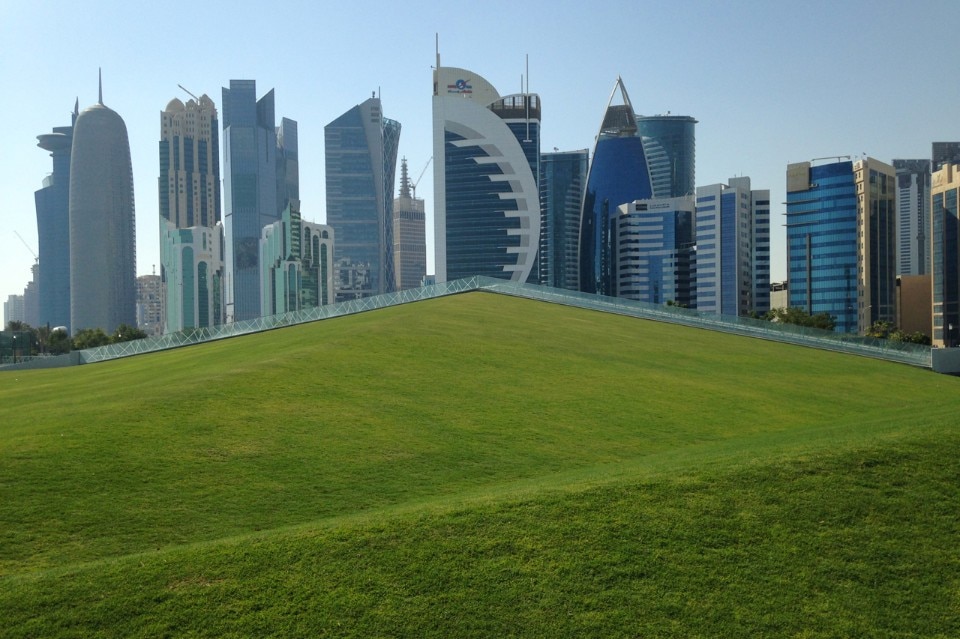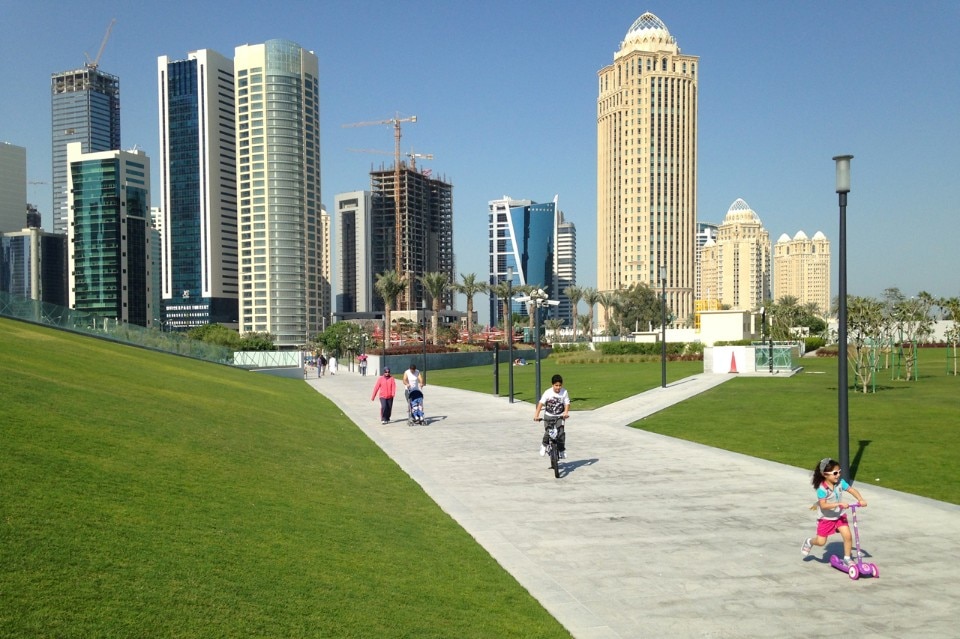
It is an exceptional whole, not just in terms of size but because every feature seems designed to overcome the constraints of nature and technology. It redesigns the flat desert landscape and the once linear coast with architecture and jagged urban scenes that trace new geographies, multiplying the diversity and areas exposed to sun and sea.
In this context, where glistening steel/glass towers rise like mountain peaks beneath the tropical sun, repeatedly renegotiating the boundary between land and sea (West Bay, The Pearl and the, still under construction, Lusail City are all built on artificial ground), and there are flowerbeds and English gardens in a country where the only freshwater is desalinated seawater, the Arup Landscape project had no choice but to up the ante.
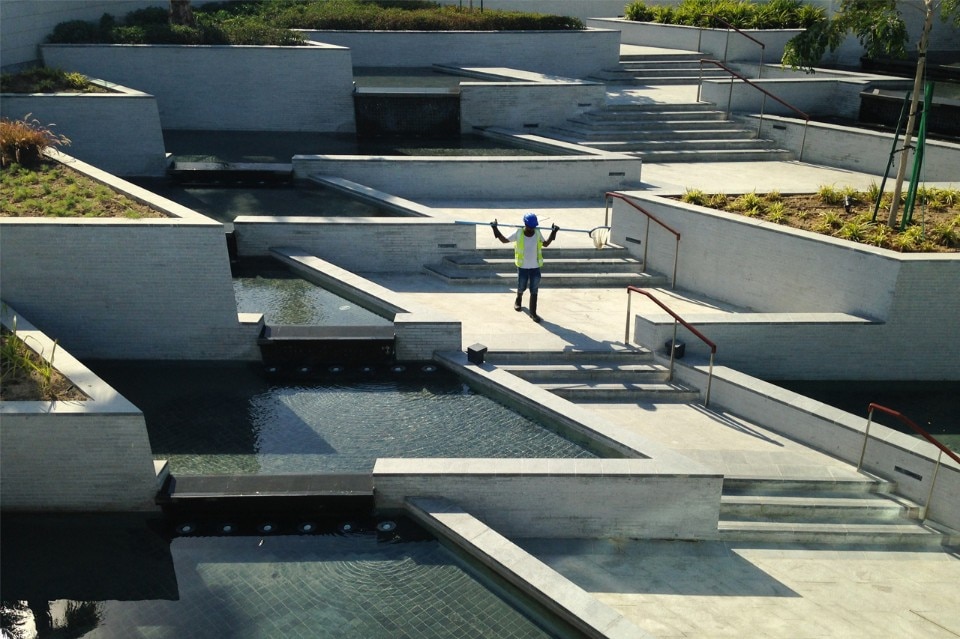
The Park is a triumph of plays of water, acoustic fountains, waterfalls and even a large sheet of shallow water crossed by inviting walkways, seeming purpose-designed to turn into a pool to play in.
An irregular diamond grid crosses the 7+ hectares of ground with a network of routes circumscribing areas with different features, intended for picnics and weekend relaxation in the shade, unlike the road, of two large grass-covered hills (reiterating the design of the already familiar hills of the MIA Park on the other side of the bay). Beyond the hills – ideal for a little exercise, rolling down or enjoying the unusual cityscape of skyscrapers towering above them like flowers on mountain meadows – is the predictable play and sand area, flowering pergolas and more paths through a system of stepped flowerbeds, water basins and waterfalls, playing with level differences linked to a large carpark (serving the new conference centre) extending beneath the whole park area.
For West Bay which, as well as banks, offices and ministries, is home to a fair-sized residential density and, more generally speaking, for this city where parks are one of the few points of encounter for a mostly very segregated population (i.e. split by residence permits offering hugely differing degrees of freedom and living standards), this park undoubtedly represents a new positive element, a new large open-air and unenclosed playground that will make adults and children happy, free as they are to romp and play with the water in all sorts of ways.
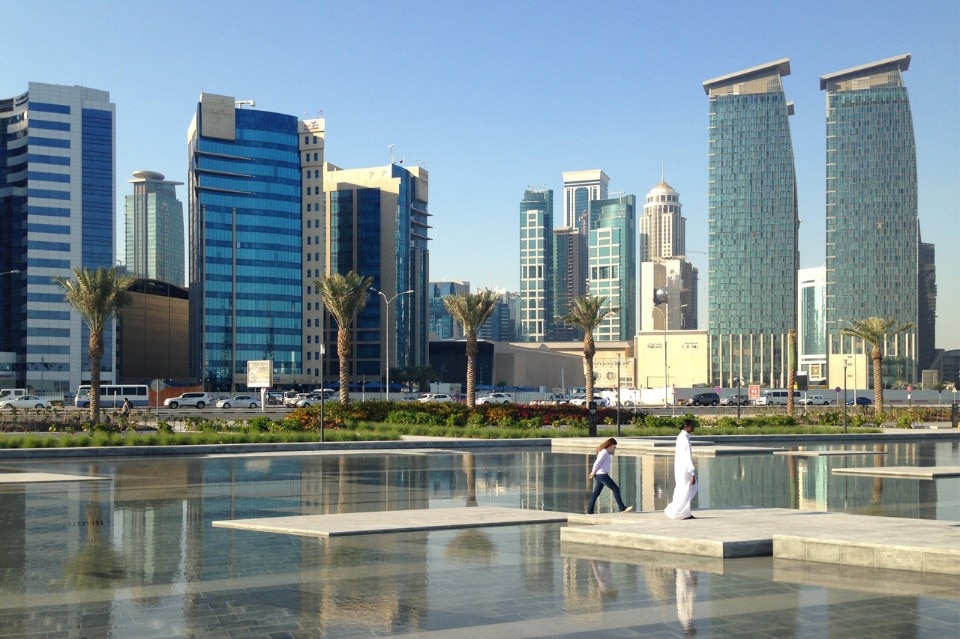
In terms of its general urban metabolism, namely the system of matter and energy flows constantly entering and leaving a city, these lawns will increase the water consumption of a region that already has the sorry record of nearly 600 litres per person/day. However, Doha seems to be moving in this sense too and many innovations are in the pipeline.
As well as launching a major communication campaign to raise awareness on the importance of saving water, the local authorities are investing 4.5 billion dollars in the experimentation and construction of new desalination, freshwater storage and waste-water treatment plants. This investment is more than four times that allocated to build new stadiums for the 2022 World Cup.
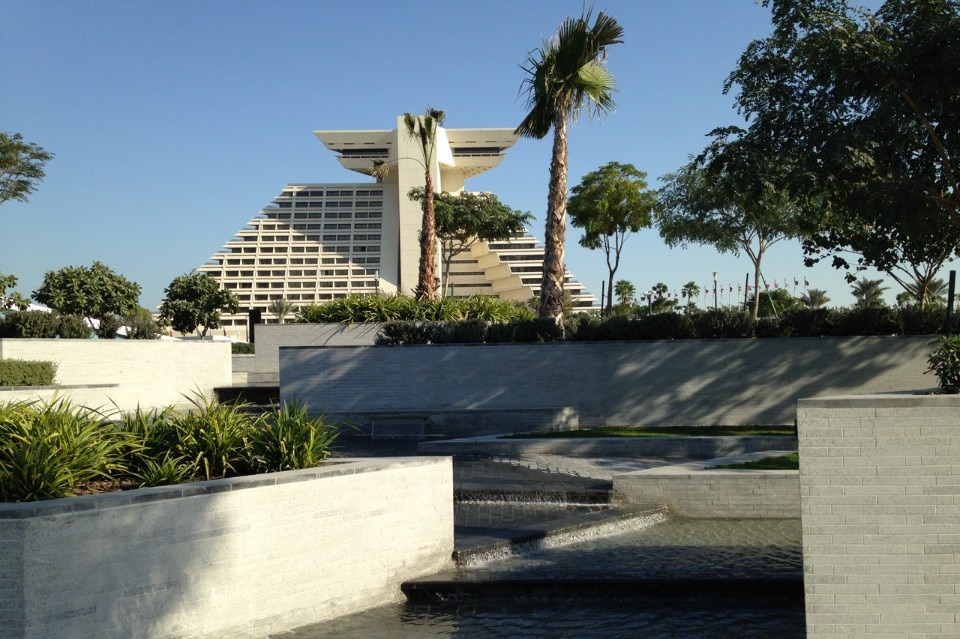
Water is already also Qatar’s blue gold, right now.
Surface resources have disappeared (the original Doha settlement grew up around a river that is still visible in photographs of the early 1950s but has now completely dried up. The other wadi in the region have suffered similar fates) and resources deep in the ground cannot be used because of their high mineral content. Today, Qatar can rely only on the desalinisation of seawater, a process that consumes large quantities of energy and is ecologically challenging. It is achieved by recycling the heat produced by power stations to heat water and make it evaporate (it then recondenses in the form of freshwater). The leftover salt is thrown back into the sea, altering the Gulf’s ecosystem.
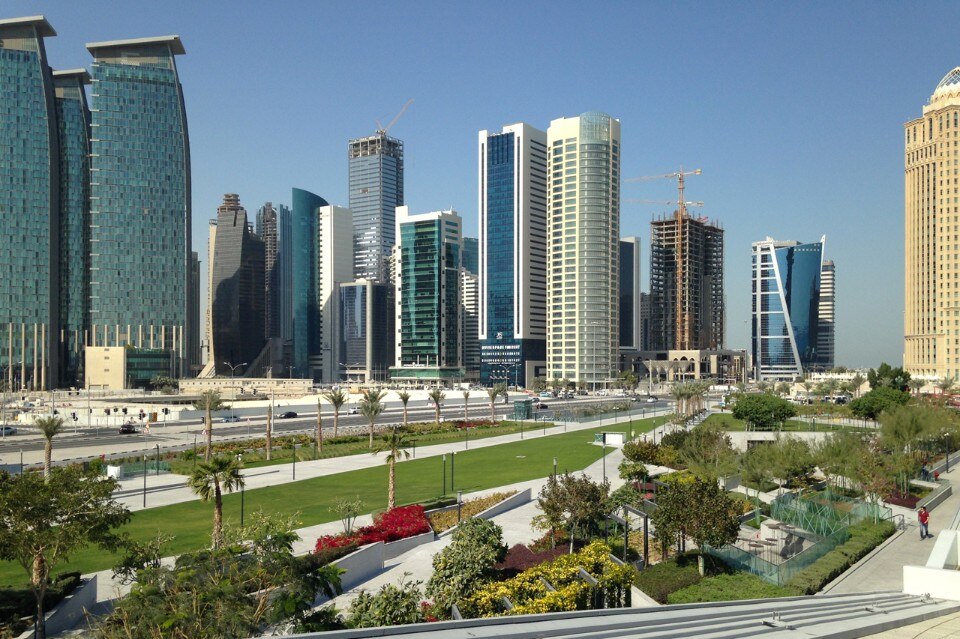
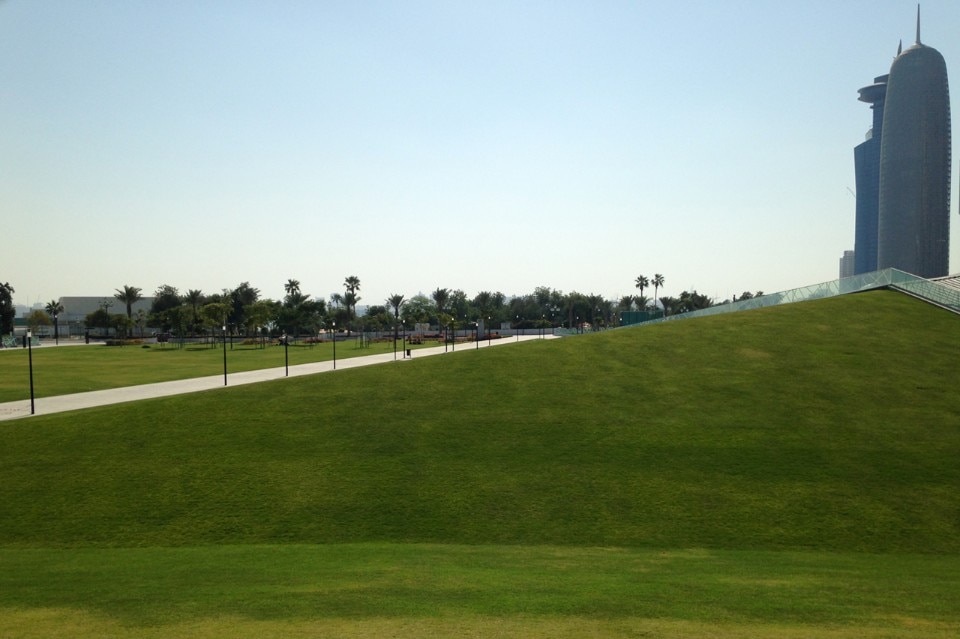
Reorganising the plants and networks of what in every city worldwide is the major flow of matter in the urban ecosystem is a technically and culturally complex challenge. Qatar is working to define a new integrated masterplan for the management of the entire water cycle and has just opened the first water-treatment plant employing UV radiation technology rather than the traditional (and polluting) chlorine treatment. It is the first to produce high quality treated waters, for irrigation. There is still a long way to go to reduce the water footprint and, indeed, the eco footprint of the region as a whole but the level of investment poured into this resource demonstrates, yet again, the capacity for vision of this little country surrounded by sea.
While the plays of water and the large plaza-pool of the Sheraton Park, playful and monumental, add another small gem to this city’s artificial landscape and public space, we can only hope that the new water-efficiency plan is also translated into reality, soon.


